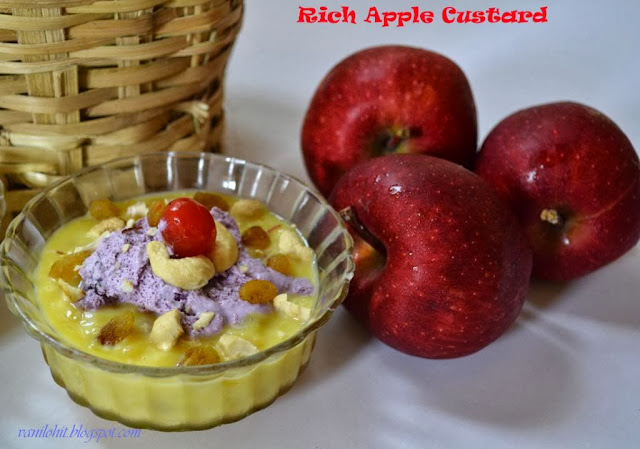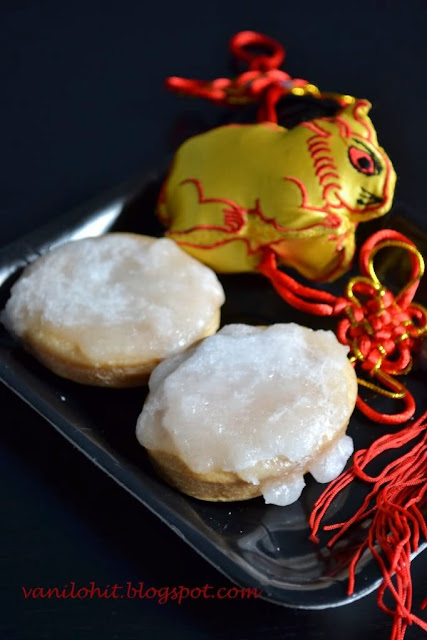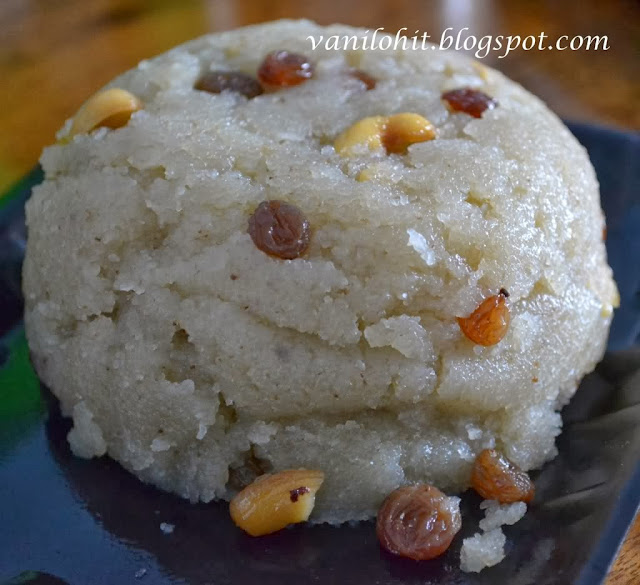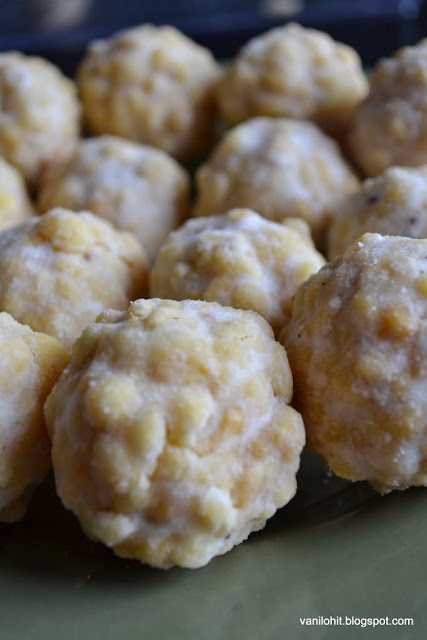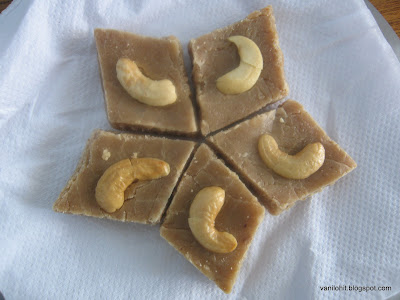ಕನ್ನಡದಲ್ಲಿ ಓದಲು ಇಲ್ಲಿ ಕ್ಲಿಕ್ ಮಾಡಿ.
Mostly people who have a rural base will be familiar with this recipe. Ginnu is a sweet dish prepared from lactating cow's milk or colostrum milk of cow. Normally, first day's milk will be thicker and it can be used to prepare Ginnu. Often its called as 'Posu', 'Junnu' or Kharvas in different languages. In my native place, its called as 'Battalu Ginnu'.
We both are the great fans of Ginnu. Being away from native, we rarely get a chance to enjoy this sweet dish. One of my sister stays Hyderabad. She keeps preparing Ginnu using a powder mixture which they get there. Even I searched, but never found such a mixture in Bangalore. I had tried making Ginnu using normal milk by referring recipes on the net, but the taste was not that great.
Last week, I had a chance to taste Ginnu at my mother's place. Mom prepared it twice and I enjoyed eating :) Preparing Ginnu using colostrum milk is damn easy. Also, won't take much time for you to prepare! Try this recipe when you get colostrum milk of cow and let me know your feedback :)
Preparation time: 20 minutes
Yield: 10 medium size pieces
Difficulty level: Easy
Ingredients:
Method:
Tips:
We both are the great fans of Ginnu. Being away from native, we rarely get a chance to enjoy this sweet dish. One of my sister stays Hyderabad. She keeps preparing Ginnu using a powder mixture which they get there. Even I searched, but never found such a mixture in Bangalore. I had tried making Ginnu using normal milk by referring recipes on the net, but the taste was not that great.
Last week, I had a chance to taste Ginnu at my mother's place. Mom prepared it twice and I enjoyed eating :) Preparing Ginnu using colostrum milk is damn easy. Also, won't take much time for you to prepare! Try this recipe when you get colostrum milk of cow and let me know your feedback :)
Preparation time: 20 minutes
Yield: 10 medium size pieces
Difficulty level: Easy
Ingredients:
- Colostrum milk of cow / buffalo - 3 cups (See Tips)
- Sugar - 2 cups
- Saffron - 15 strands
Method:
- Combine sugar with milk and mix it till the sugar gets dissolved completely.
- Fill the pressure cooker base with water and allow to heat.
- Add saffron strands and transfer the sweetened milk into a steel pan which fits inside the pressure cooker.
- Close the lid of pressure cooker and allow it to get cooked. Switch off the flame after 2 whistles.
- Once the pressure cooker becomes cool, take out the pan and cut the Ginnu into squares.
- That's all, delicious Ginnu is ready to eat!
Tips:
- If its the very first colostrum milk of buffalo, it will be very thick. Just add equal quantity of water and dilute the milk to avoid Ginnu becoming too hard. If its the second time milk, no need to add water. If its cow's colostrum milk, don't add water anytime.
- Make sure that the sugar is dissolved in the milk completely. Once you put it for cooking, it won't dissolve any more.
- You can replace saffron strands with cardamom powder or nutmeg to get a different flavor.
- Sugar can be replaced with jaggery for this recipe (depending on your taste). I prefer adding sugar itself.



